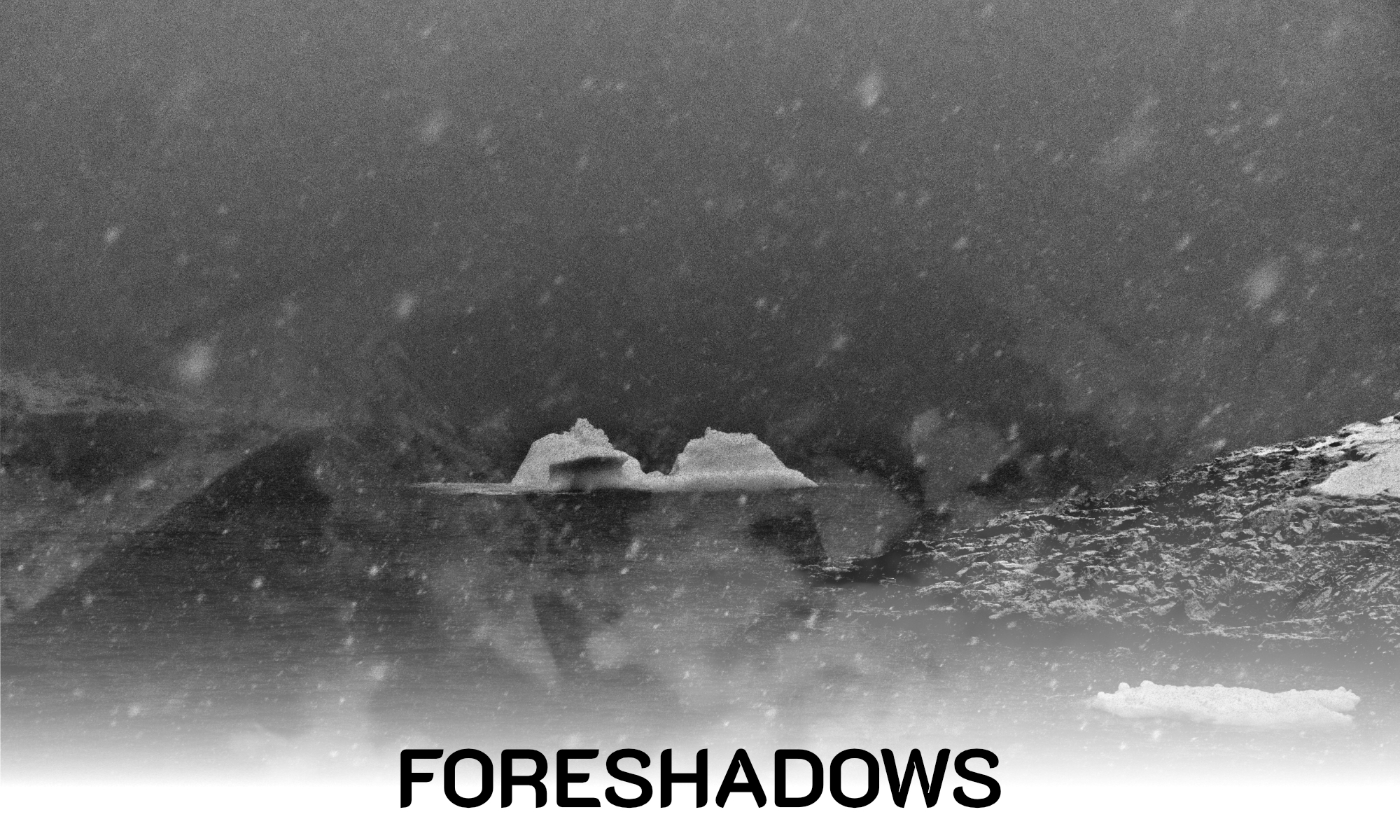
FORESHADOWS Kaperlak is an extraordinary creative adventure, carried out solo in the field, in Greenland, during the polar night, on the small island of AKUNNAAQ, in Disko Bay, at 68° North latitude.
In extreme cold, over the course of five weeks during the winter of 2025, as an intrepid seeker of sound and images, I aim to offer a unique perspective on the Far North and invite reflection on the relationships between living beings and technology within this fragile and singular Arctic environment.
It is about measuring the constant dialogue between the ecumene (the inhabited space) and the ereme (the wilderness), where encounters with ice and conversations with the inhabitants — marked by profound humanity and generosity — encourage the deconstruction of preconceived notions and neo-colonial fantasies.
A critical and poetic outlook, expressed through sound, imagery, and counter-mapping, delicately witnessing the ongoing devastating upheaval — both climatic and political — in the Far North, while sharing this epic that is more humanistic than naturalistic.
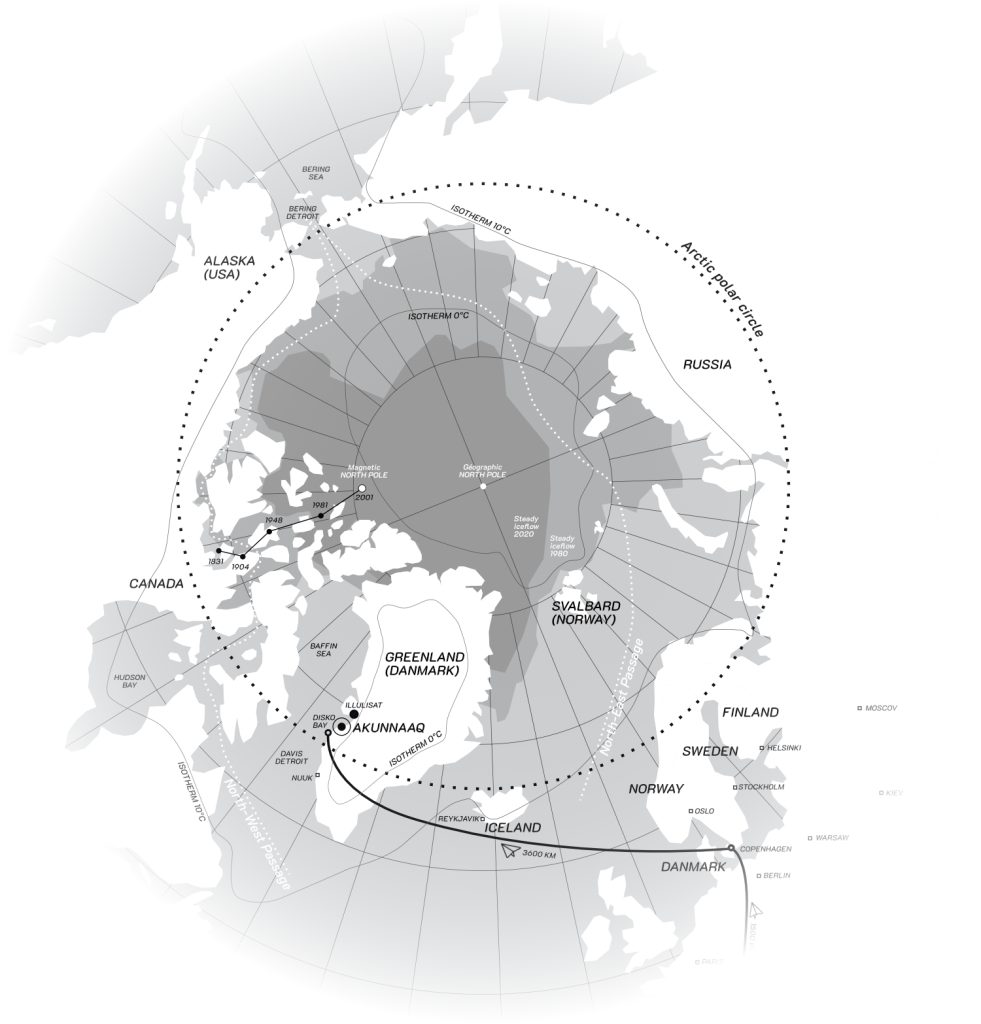
EXhibitions
Two forms of exhibitions coexist in this project:
- A traditional exhibition, focused on photographs and maps, in a minimalist and contemplative scenography;
- An augmented exhibition, which incorporates projections, spatialized soundtracks, excerpts from a sound journal, animated maps, and installations.
These two setups can be activated separately or together, depending on the venue, available technical resources, and the target audiences.
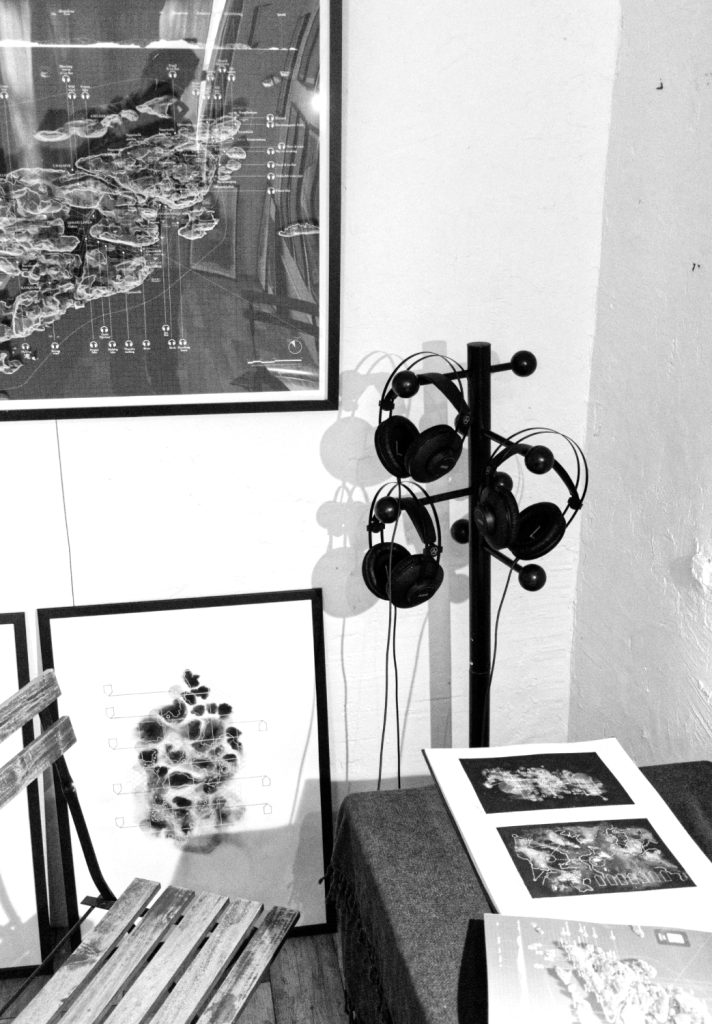
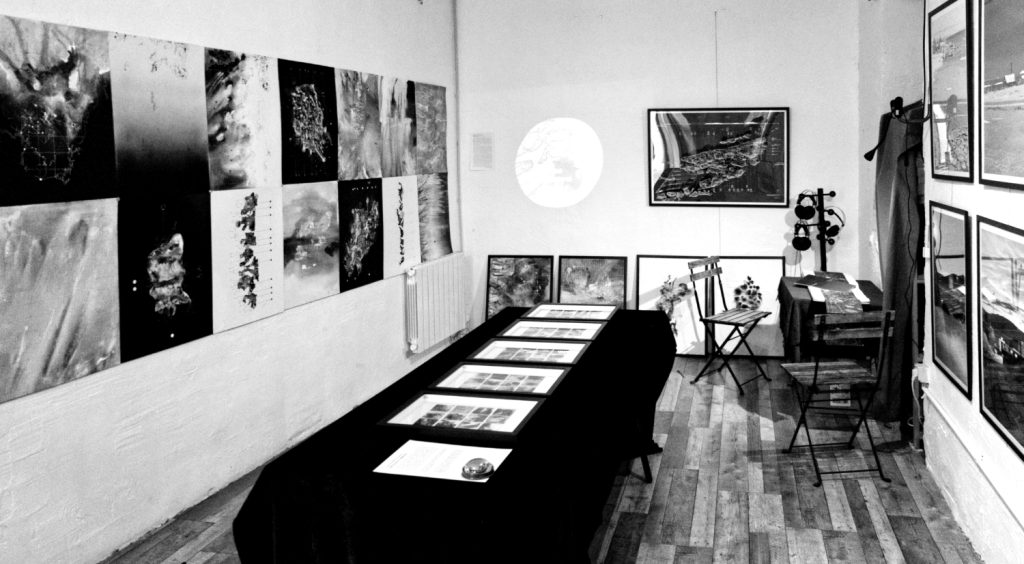
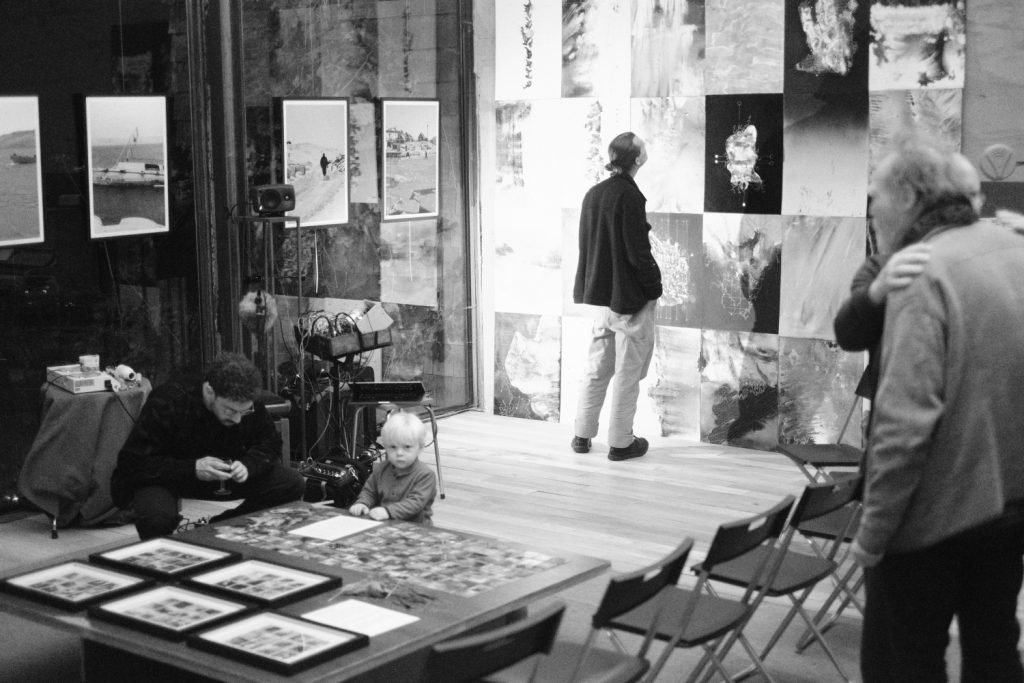
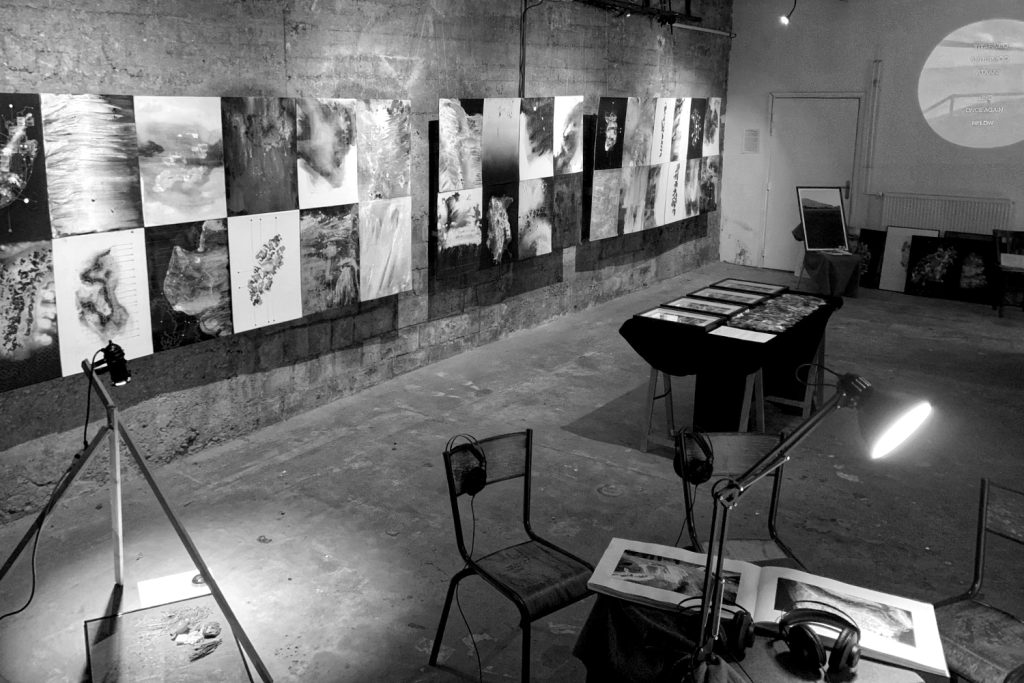
PHOTOGRAPHY
The photographic documentation relied on a strict protocol, quite similar to the sound approach: a dialogue between the macro and the micro within the spaces and places explored.
First, a single very bright prime lens, in 35mm, was used to capture the details of the polar night. The framing, systematically vertical and in black and white, aligns with an aesthetic close to street photography — even though there are, or barely any, streets in the Arctic environment.
A deliberate choice, the abandonment of color — which in the Arctic is incredibly subtle and beautiful — was a necessary decision to emphasize spatial questions. The landscape photography in portrait mode allowed me to bring the off-frame into focus much more fluidly than with a landscape framing, or a “naturalistic” approach with its expectations of collapsing icebergs or glaciers, which are pitfalls of the spectacular and exoticizing extractivist Western documentation.
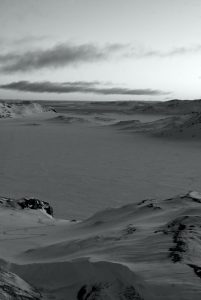
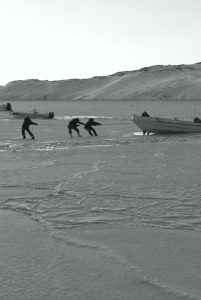
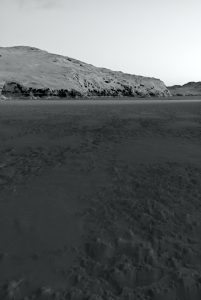
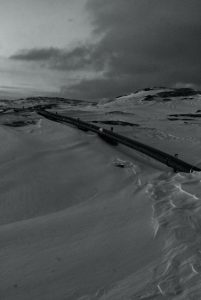
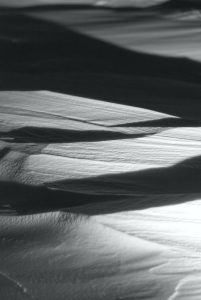
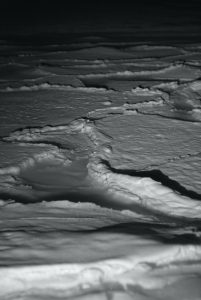
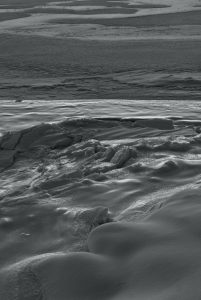
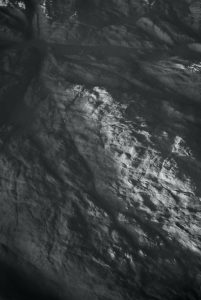
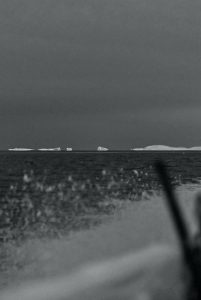
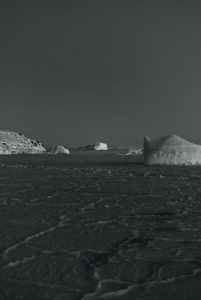
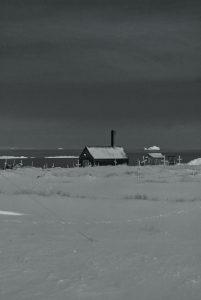
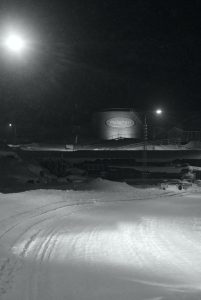
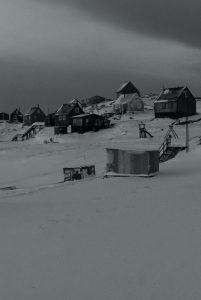
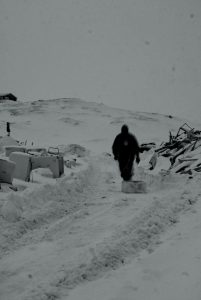
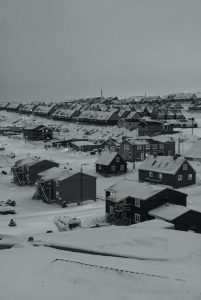
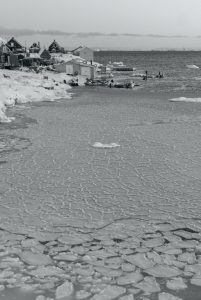
Excerpts from a series of 44 prints in 50cm/70cm format on Hahnemühle German Etching paper, available for sale (please contact me for inquiries).

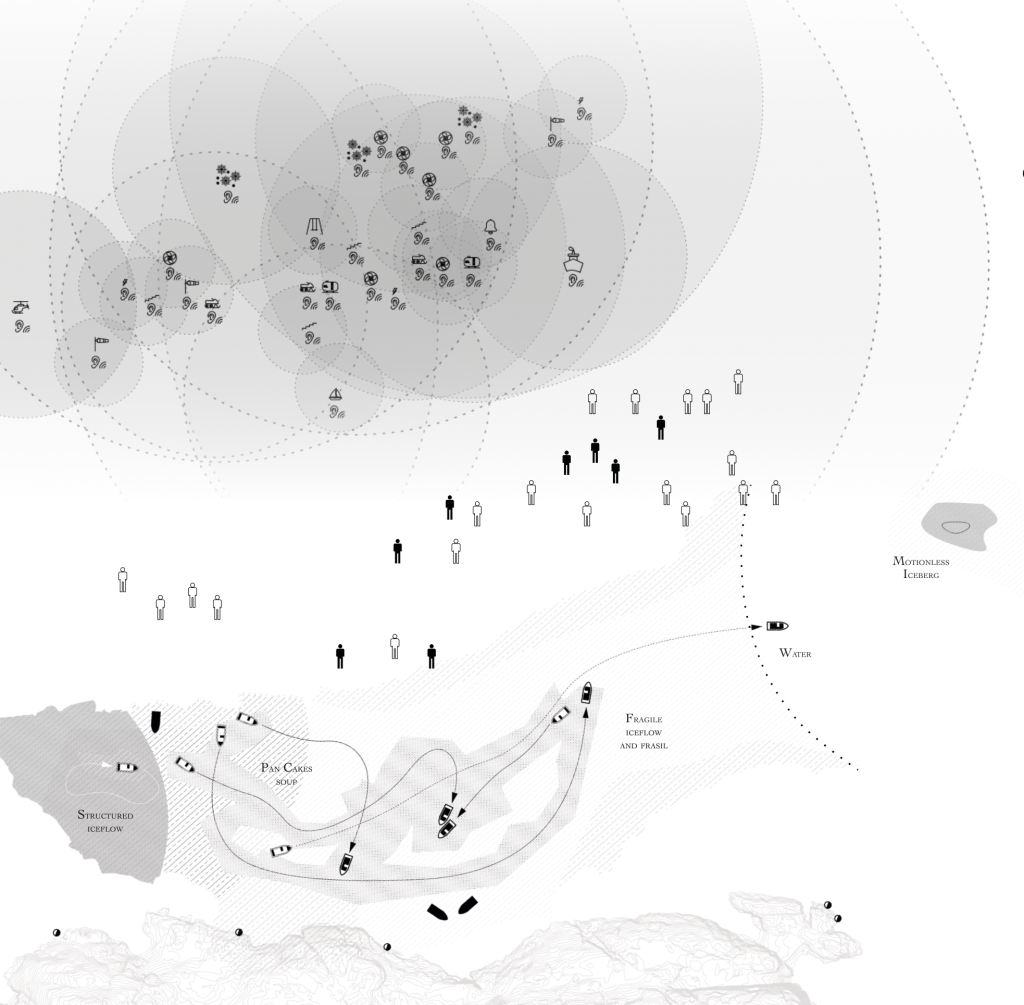
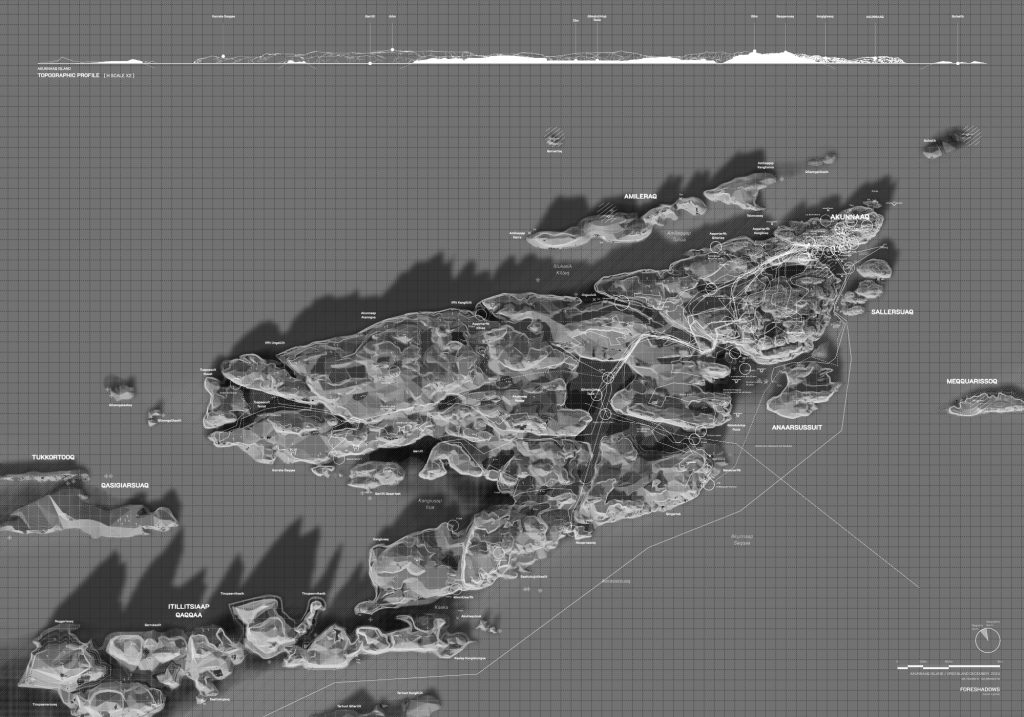
A series of maps, diagrams, and counter-maps created using GIS (Geographic Information Systems)
CARTOGRAPHIC COUNTER-FICTIONS
To testify that things “take place,” a set of counter-fictional maps was created, painted in watercolor, exploring opposites and entropy — salt/honey, liquid/solid, hot/cold, black/white — with the aim of resonating together with sound and image.
Upon my return, I extended this graphic work with a series of watercolor miniatures, created on frozen glass plates, in the manner of a lab technician examining, under a microscope, the structure of an ice core.
From this experimentation arises a series of macrophotographs, which intertwines with the work created on-site, extending the dialogue between sensory abstraction, Arctic material, and observation protocols.
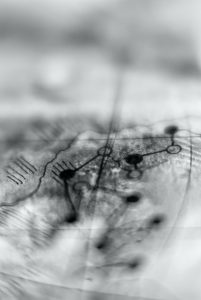
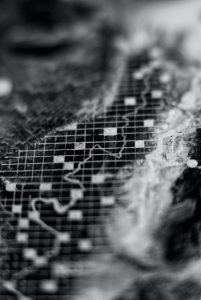
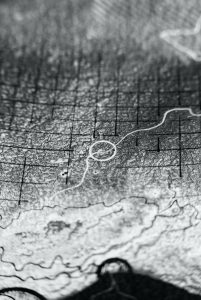
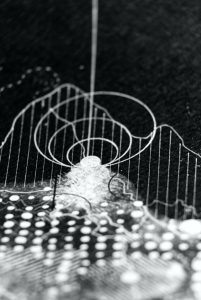
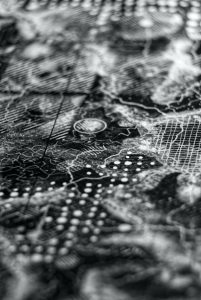
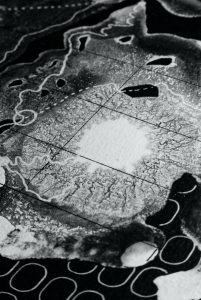

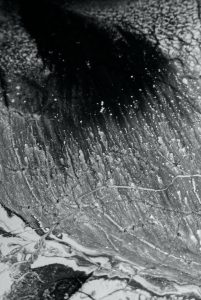
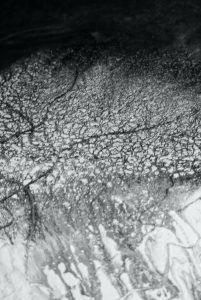
A series of counter-fictional maps in white watercolor (titanium), salt, and honey on black paper, handmade maps available for sale (please contact me for inquiries).
This work, conceived as an immersive and multisensory experience, can be deployed in various contexts — exhibition spaces, sound installations, performances… depending on the venues, seasons, and upcoming dialogues.
PERFORMANCE
Foreshadows also unfolds on stage, in the form of an immersive performance.
Conceived as a living extension of the exhibition, the performance combines live:
– An electroacoustic + instrumental musical intervention and field recordings;
– A projection of animated images, drawn from the visual corpus of Kaperlak;
-Poetic or documentary statements, invoking the voices of the inhabitants and fragments from field notebooks;
– Live manipulation of materials (ice, sand, salt…) and objects, in the manner of a lab technician.
The performance is designed as a moment of sensory and critical sharing.
It offers a visual and auditory narrative of the Far North, oscillating between intimate storytelling, political manifesto, and sensory immersion.
Depending on the setup, it can be presented solo or in collaboration with a musician or an actor.
Adjustable duration :
30 min / 45 min / 60 min.
Each territory that hosts this work becomes a co-actor in its resonance. Foreshadows adapts to the space, the climate, the technical constraints, but above all, to the perspective of those who listen to it, traverse it, and interpret it.
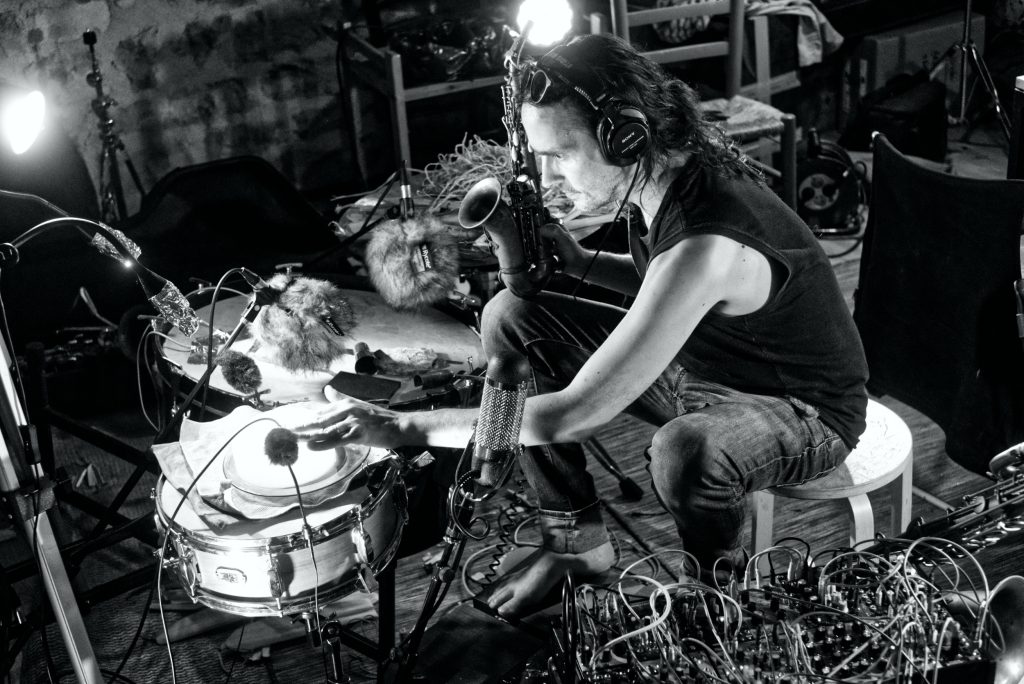
Production : Coincoin productions
Contact : +33 4 78 62 34 38
Mail : contact@coincoinprod.org
Web site : https://www.coincoinprod.org/
Foreshadows is supported by a constellation of partners working at the intersection of artistic creation, sensitive ecology, and territorial research:
Coin Coin Productions, SCIC-Habitée, Lieux-Fauves, Les Amis d’Akunnaaq, Commune of Qeqertalik (Greenland), Artists in Arctic program, LABServatoire, Naya fondation, Michel Serres Institute and Metropole de Lyon.

Labeled “Year of the SEA” by the Ministry of Ecological Transition, this project is rooted in a collective dynamic of contextual creation and international resonance.
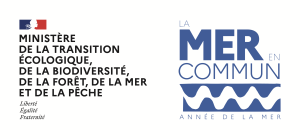
Some references :
PENSER COMME UN ICEBERG, De Olivier Remaud, édition Actes Sud 2020
RÊVES ARCTIQUES, De Barry Lopez, éditions Gallmeister 2014
TAQQAT UUMMAMMUT AQQUTAANNUT, De Aqqaluk Lynge, éditions Polar Institute Press 2008
LE DROIT AU FROID, De Sheila Watt-Cloutier, éditions Écosociété 2019
BANQUISES & GLACIERS, Revue RELIEFS n°17 & n°18, éditions Reliefs 2023
CARTOGRAPHIE RADICALE, De Nephthys Zwer et Philippe Rekacewicz, éditions La Découverte 2021